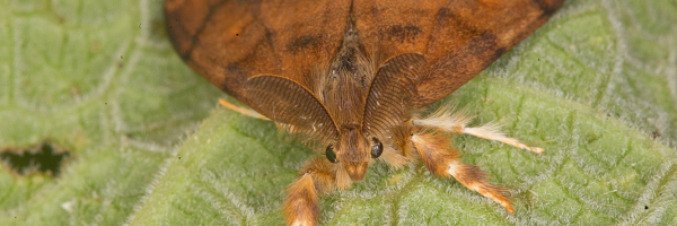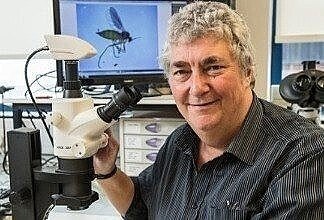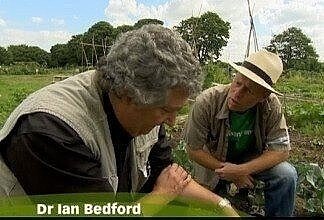
The Life Cycle of the Vapourer Moth
From winter into early spring, it’s not uncommon to find a 1cm long purse-like structure made from silk threads within gardens across Britain, attached to tree trunks or under an outdoor window ledge. The structure is covered in little brown spheres, each with a dark brown spot in the middle.
These will be the empty cocoons of female Vapourer moths (Orgyia antiqua), covered with the eggs they’ll have laid during autumn, which have remained dormant throughout winter.
These will be the empty cocoons of female Vapourer moths (Orgyia antiqua), covered with the eggs they’ll have laid during autumn, which have remained dormant throughout winter.
What are vapourer moths?
Vapourer moths are a common species found in a wide range of habitats throughout Britain. Over millions of years, they have evolved a set of biological characteristics that greatly increase their ability to cope with the many hazards that moths face in nature.Beginning with the arrival of warm spring weather, tiny black larvae begin hatching from the eggs on the Vapourer moths’ cocoons but instead of all hatching together, their emergence is staggered, often over many weeks.
This ensures that at least some of those larvae emerge when the surrounding environment is more conducive to their survival, whether it’s weather-related or the availability of food plants.
But even if the conditions are fine when the larvae emerge from their eggs, they’ll usually face another challenge since the location they’ve hatched from can be quite a distance from the food plants that these tiny larvae must travel to.
However, they’ve developed a solution to this too, since their bodies are covered in long fine hairs that, even in a moderate breeze, will enable the larvae to become airborne and carried to one of the many different plant types that they’re able to survive on.
Feeding on their host plants new leaves for the following 4 to 6 weeks, the larvae grow larger and, after a series of skin sheds, become one of Britain’s most stunning and easily recognisable moth larvae with four prominent tufts of hair down their back, two horn-like tufts above their head, and one at the rear.
By mid-summer, the now mature larvae leave their host plant in search of a sheltered location where they’ll spin a cocoon and perform their final skin shed within to become a pupa.
After just a couple of weeks though, the adult Vapourer moths hatch from their pupae and secrete a silk-dissolving enzyme to make a hole in the cocoon, from which the adult moth will crawl out.

The difference between male and female vapourer moths
The Vapourer moth is a sexually dimorphic species, so the males and females look very different from each other. The males look more like a ‘typical’ moth, sporting delta-shaped rusty brown coloured wings with two white spots on their forewings, slim bodies and large comb-like antennae.However, the females appear wingless, since their wings are just tiny undeveloped stumps. Their bodies however are velvety grey and plump and contain around 300 eggs.
So, as the newly emerged males expand their wings and take to the air, the flightless females remain on the outside of their cocoons, from where they start signalling their presence to the males by releasing a chemical sex pheromone - a signal that male Vapourer moths can detect and follow using their antennae from several miles away.
Although several males will follow the trail to a female and can often be seen in groups flying around a female, only one will succeed in mating with her. The female will then proceed to lay all her eggs on the outside of her empty cocoon before falling to the ground to die.
The role of vapourer moths in the ecosystem
Vapourer moth larvae feed on a variety of garden plants, including rose, pyracantha, wisteria, and apple. However, they rarely cause any significant level of damage and should be tolerated wherever possible.Adult moths play an important role in the ecosystem, serving as a vital food source for insectivorous birds and other wildlife.

About Dr Ian Bedford
Ian has been fascinated by the bug world for as long as he can remember. From studying butterflies on the South Downs as a youngster, he went on to pursue a career in Research Entomology and ran the Entomology Dept at the John Innes Centre in Norwich up until his recent retirement.VISIT WEBSITE

'Bug of the month'
Visit our 'bug of the month' archive.
Every month Ian will share his knowledge on how to protect your plants and gardens from preventable pest invasions while providing valuable insights into the insects regularly found in our gardens.
find out more
Comments (0)
Why not be the first to send us your thoughts?
Leave A Comment
Most popular articles
1
Plastic plant pots dimensions and uses2
Peat vs Peat Free - Choosing the right Potting Compost3
How to Grow Watercress at home in plant pots4
January Jobs5
Our guide to seed sowing compost